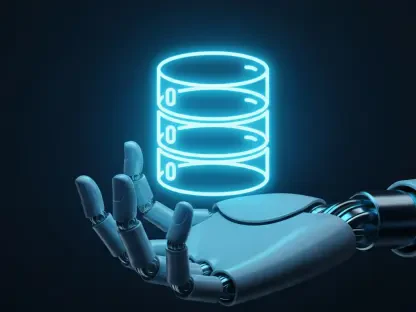The mobile app development landscape is continuously evolving with each new technological advancement. Google’s introduction of Dart and Flutter has created a significant shift in how developers approach building apps. Dart, a modern, object-oriented programming language, is crafted for UI-centric applications across various platforms. Its companion, Flutter, is an open-source UI toolkit that enables developers to create seamlessly high-performance and natively compiled applications for mobile, web, and desktop from a single codebase using Dart. This transformative duo offers a streamlined path for developers, who can now focus on creating efficient and sophisticated applications without being bogged down by the complexities of traditional mobile development stacks.
The Advantages Driving Adoption
Efficiency and Simplicity
Dart and Flutter have rapidly become favorites in the developer community, owing to their robust features and straightforward usability. Perhaps most notably, they enable developers to write a single codebase that can be deployed across multiple platforms, which vastly reduces time-to-market. This approach simplifies the development process, leading to increased productivity and a more uniform app experience across devices. In addition, the efficiency offered by this model allows developers to focus on user experience enhancements, aligning with modern consumer expectations for seamless and consistent interaction with mobile applications. As users increasingly demand applications that deliver uniform functionality across devices, this cross-platform solution becomes a competitive advantage in the market.
Endorsement and Community Support
Google’s backing is not just a branding bonus; it promises reliability and long-term support, making Dart and Flutter appealing to companies that prioritize stability and future-proofing in their projects. This endorsement assures that Dart and Flutter receive ongoing updates, bug fixes, and security patches. Consequently, developers and enterprises can depend on these tools for ongoing project development without fearing premature obsolescence. The widespread community support further enhances this attractiveness, as a vibrant ecosystem of developers continuously contributes to libraries and plugins. This ever-expanding repository of shared resources allows teams to leverage a wealth of collective knowledge, speeding up development cycles and encouraging innovation.
Industry Adoption and Security
Embracing New Frameworks
Major players in highly regulated industries, like banking and financial services, have increasingly turned to Dart and Flutter. Companies such as Bay Bank and Equifax have successfully integrated these technologies into mission-critical applications, showcasing their reliability and effectiveness. The adoption of Dart and Flutter by such organizations is a testament to their robustness. This transition not only demonstrates faith in Google’s frameworks but also emphasizes the necessity for reliable and secure solutions in industries where precision and efficiency are paramount. As demands for rapid innovation grow, the flexibility and reliability of these tools are likely to appeal to other industries facing similar pressures.
Managing Security Risks
Security is paramount in any development environment, more so in sectors handling sensitive data. Sonatype, a leader in software supply chain security, supports Dart and Flutter, recognizing the growing demand for secure development in these ecosystems. Sonatype provides tools integrated within the Sonatype Platform, assisting teams in managing open-source risk by offering comprehensive policy enforcement, component intelligence, and automation throughout the software development lifecycle. These integrations ensure that vulnerabilities are identified and mitigated early, preserving the integrity of applications and data they handle. As industries become more data-centric, ensuring security alongside innovation becomes indispensable for maintaining consumer trust and regulatory compliance.
Supporting Infrastructure and Development Practices
Dependency Management
A critical aspect of Dart and Flutter development involves managing dependencies, particularly through the pubspec.yaml and pubspec.lock files. The pubspec.yaml file specifies project dependencies, allowing Dart to retrieve the latest versions available. This feature provides flexibility but also poses potential risks associated with automatic updates, which might include vulnerabilities or breaking changes. In contrast, the pubspec.lock file records the exact versions in use, ensuring consistency and reproducibility across different development environments. This system prevents projects from encountering unexpected issues while transitioning between versions, thereby enabling safer and more controlled development cycles.
Repository and Resource Allocation
In the ever-evolving realm of mobile app development, continuous technological advancements are reshaping how developers build applications. Google’s unveiling of Dart and Flutter has instigated a significant transformation in this field. Dart is a contemporary, object-oriented programming language specifically designed for UI-focused applications, adaptable across multiple platforms. Paired with Dart is Flutter, an open-source UI toolkit that empowers developers to craft highly efficient, natively-compiled applications for mobile, web, and desktop, all from a single codebase utilizing Dart as its foundation. This dynamic duo offers developers a streamlined path, liberating them from the intricate challenges associated with traditional mobile development stacks. With Dart and Flutter, developers can concentrate on designing sophisticated applications, enhancing efficiency, and embracing innovation, without being hindered by complexity. This shift catalyzes a new era in app creation, fostering creativity and innovation.









